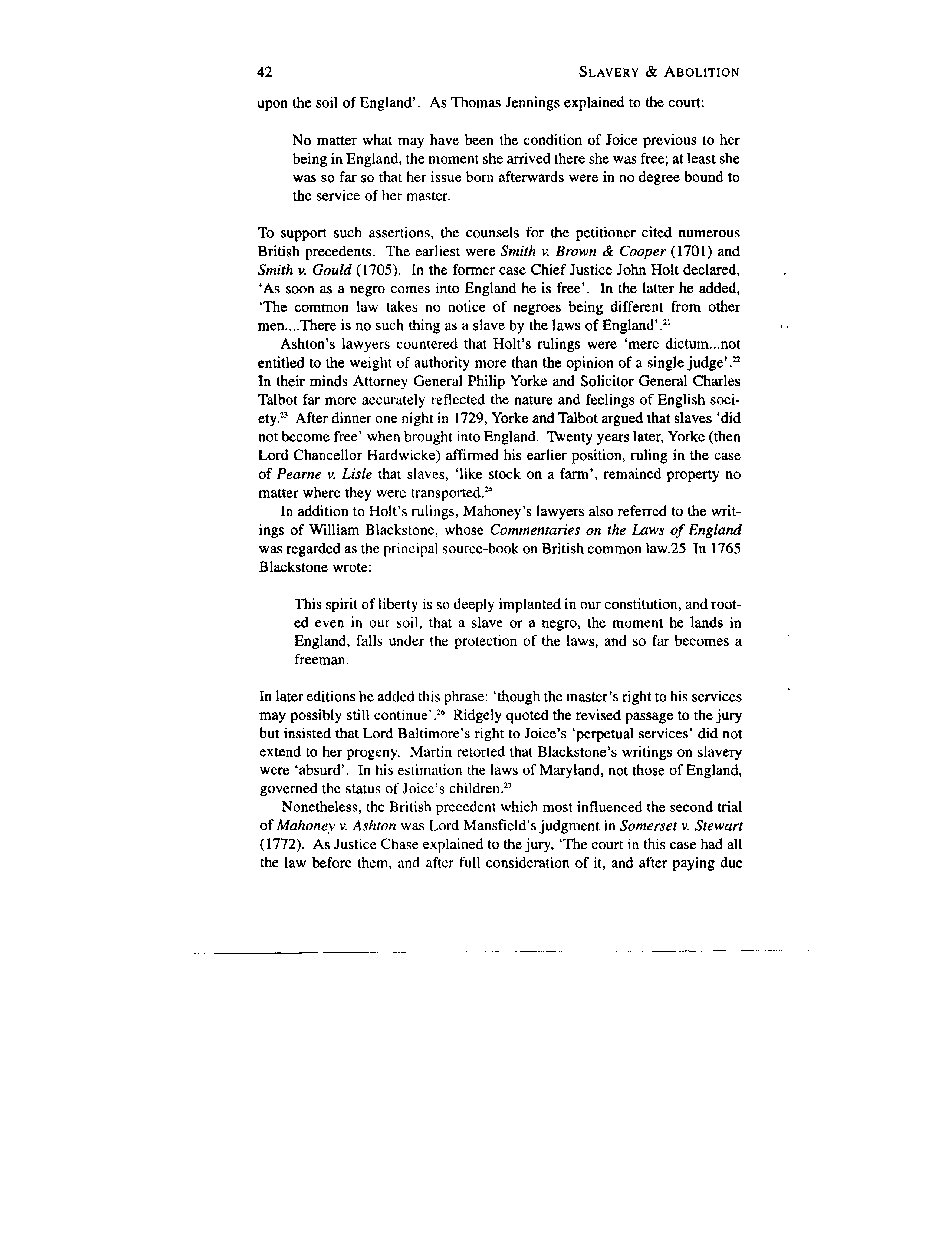|
42 SLAVERY & ABOLITION
upon the soil of England'. As Thomas Jennings explained to the court:
No matter what may have been the condition of Joice previous to her
being in England, the moment she arrived there she was free; at least she
was so far so that her issue born afterwards were in no degree bound to
the service of her master.
To support such assertions, the counsels for the petitioner cited numerous
British precedents. The earliest were Smith v. Brown & Cooper (1701) and
Smith v. Gould (1705). In the former case Chief Justice John Holt declared,
'As soon as a negro comes into England he is free'. In the latter he added,
'The common law takes no notice of negroes being different from other
men....There is no such thing as a slave by the laws of England'.21
Ashton's lawyers countered that Holt's rulings were 'mere dictum...not
entitled to the weight of authority more than the opinion of a single judge' ,n
In their minds Attorney General Philip Yorke and Solicitor General Charles
Talbot far more accurately reflected the nature and feelings of English soci-
ety.23 After dinner one night in 1729, Yorke and Talbot argued that slaves 'did
not become free' when brought into England. Twenty years later, Yorke (then
Lord Chancellor Hardwicke) affirmed his earlier position, ruling in the case
of Pearne v. Lisle that slaves, 'like stock on a farm', remained property no
matter where they were transported.24
In addition to Holt's rulings, Mahoney's lawyers also referred to the writ-
ings of William Blackstone, whose Commentaries on the Laws of England
was regarded as the principal source-book on British common law.25 In 1765
Blackstone wrote:
This spirit of liberty is so deeply implanted in our constitution, and root-
ed even in our soil, that a slave or a negro, the moment he lands in
England, falls under the protection of the laws, and so far becomes a
freeman.
In later editions he added this phrase: 'though the master's right to his services
may possibly still continue'.26 Ridgely quoted the revised passage to the jury
but insisted that Lord Baltimore's right to Joice's 'perpetual services' did not
extend to her progeny. Martin retorted that Blackstone's writings on slavery
were 'absurd'. In his estimation the laws of Maryland, not those of England,
governed the status of Joice's children.27
Nonetheless, the British precedent which most influenced the second trial
of Mahoney v. Ashton was Lord Mansfield's judgment in Somerset v. Stewart
(1772). As Justice Chase explained to the jury, 'The court in this case had all
the law before them, and after full consideration of it, and after paying due
�
|

